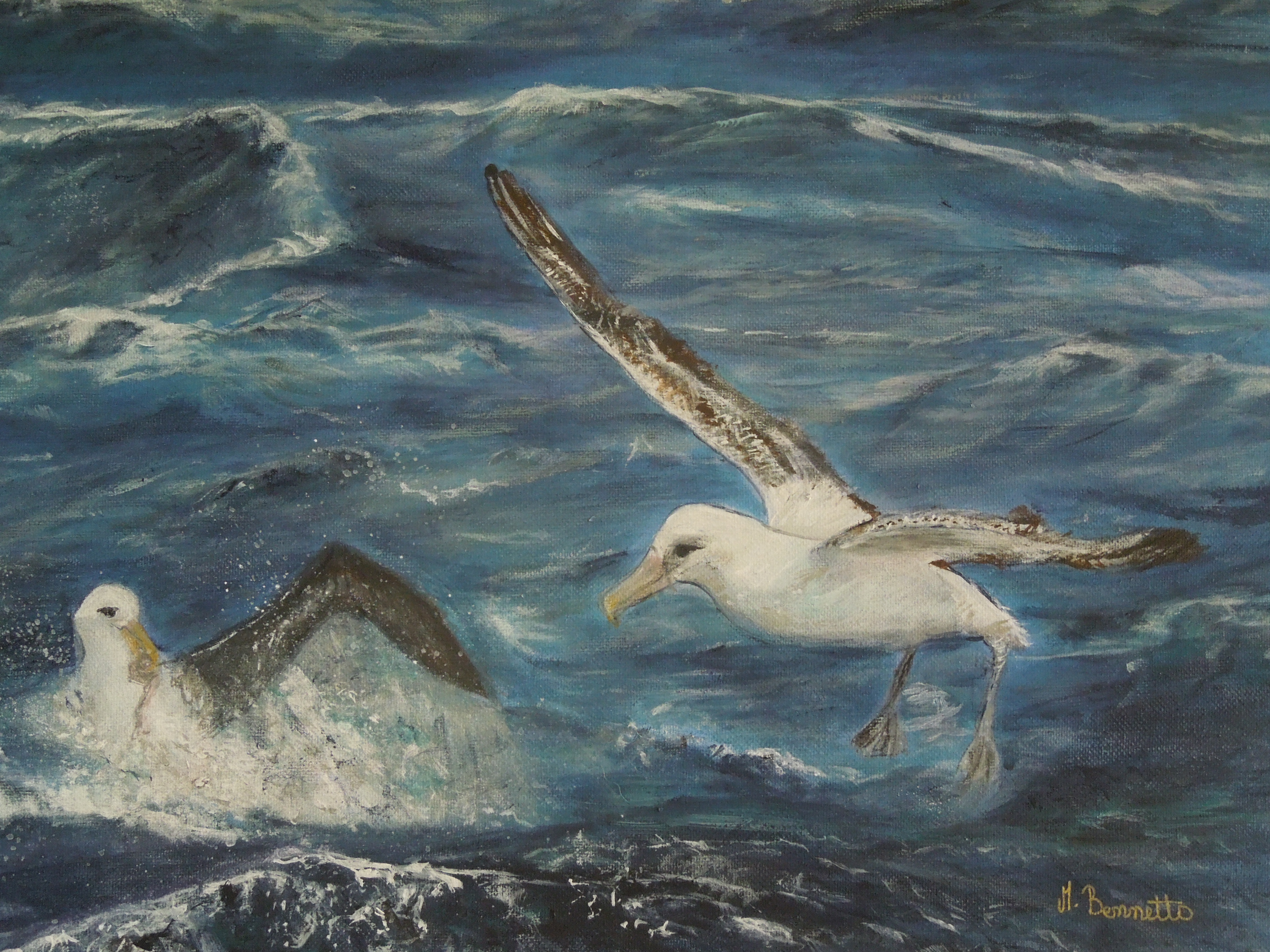A Wandering Albatross about to make a sea landing in stormy weather, by ABUN artist Maureen Bennetts for ACAP; after a photograph by Dimas Gianuca
Elham Nourani (Department of Migration, Max Planck Institute of Animal Behavior, Radolfzell, Germany) and colleagues have posted open access in the preprint server BioRxiv on how seabirds, including two albatross species, behave under extreme wind conditions at sea.
The preprint’s summary follows:
“Flying seabirds are adapted for windy environments. Despite this, storms can cause widespread strandings and wrecks, demonstrating that these seabirds are not always able to avoid or compensate for extreme conditions. The maximum wind speeds that birds can operate in should vary with morphology and flight style, but this has been hard to quantify due to the challenges of collecting data during infrequent events. Yet this information is crucial for predicting how seabirds are impacted by and respond to extreme events, which are expected to increase in intensity and frequency under climate change. We analyzed > 300,000 hours of tracking data from 18 seabird species, representing all major seabird guilds in terms of flight style. We quantified the range of wind speeds that seabirds use during their foraging trips in relation to the wind speeds available, and assessed evidence for avoidance of particular wind conditions. The maximum wind speeds that birds flew in increased with wing loading, in line with general aeronautical predictions. Two species of albatross flew in extreme winds > 23 m s-1. Within the 18 species studied, we found no general preference or avoidance of specific wind speeds. Nonetheless, in a very small number of instances, albatrosses avoided speeds below their operable maxima, demonstrating that even the most wind-adapted birds avoid extreme speeds in particular scenarios. The Atlantic yellow-nosed albatross and the wandering albatross avoided the maximum wind speeds by flying towards and tracking the eye of the storm. Extreme winds therefore might pose context-dependent risks to seabirds, and there is a need for more information on the factors that determine the of risk, given the impact of global change on storm intensity.”
Reference:
Nourani, E., Safi, K., de Grissac, S., Anderson, D.J., Cole, N.C., Fell, A., Grémillet, D., Lerma, M., McKee, J.L. Pichegru, L., Provost, P., Rattenborg, N.C., Ryan, P.G., Santos, C.D., Schoombie, S., Tatayah, V., Weimerskirch, H., Wikelski, M. & Shepard, E.L.C. 2022. Extreme tolerable winds for seabirds are determined by morphology. Bioxiv .
John Cooper, ACAP Information Officer, 13 May 2022

 Español
Español  English
English  Français
Français 